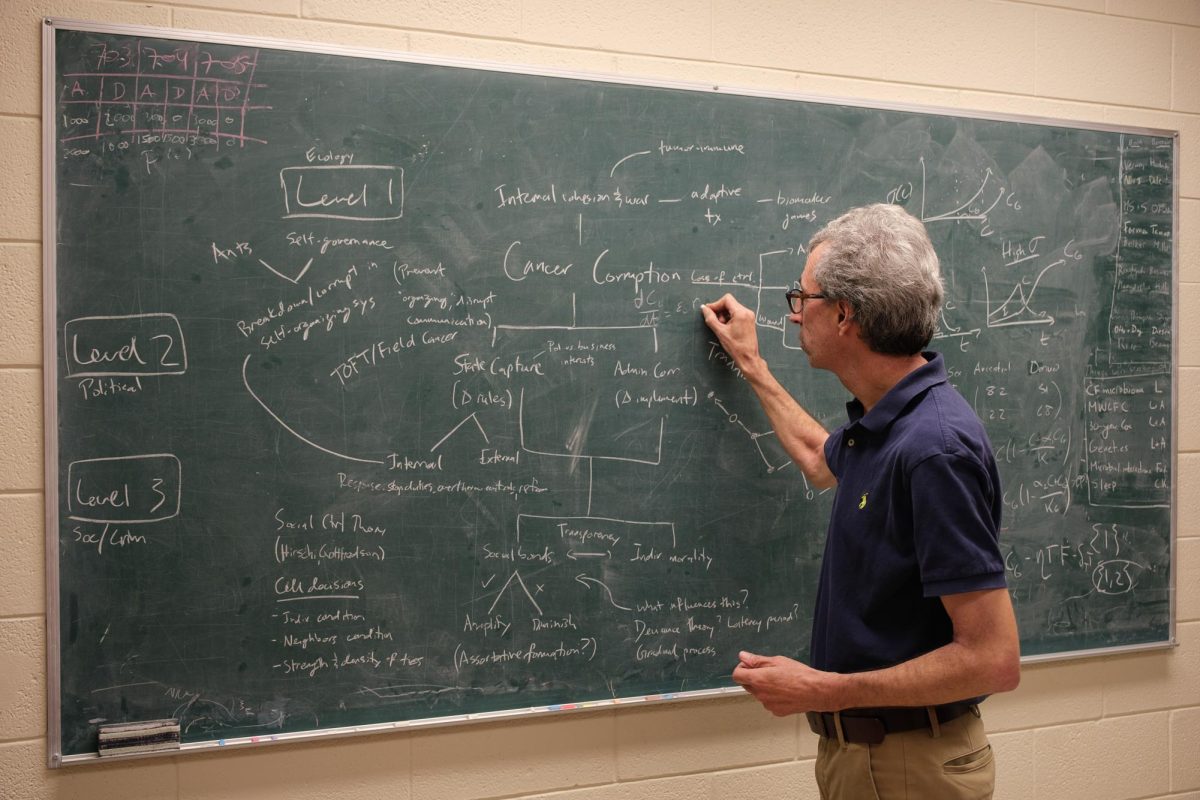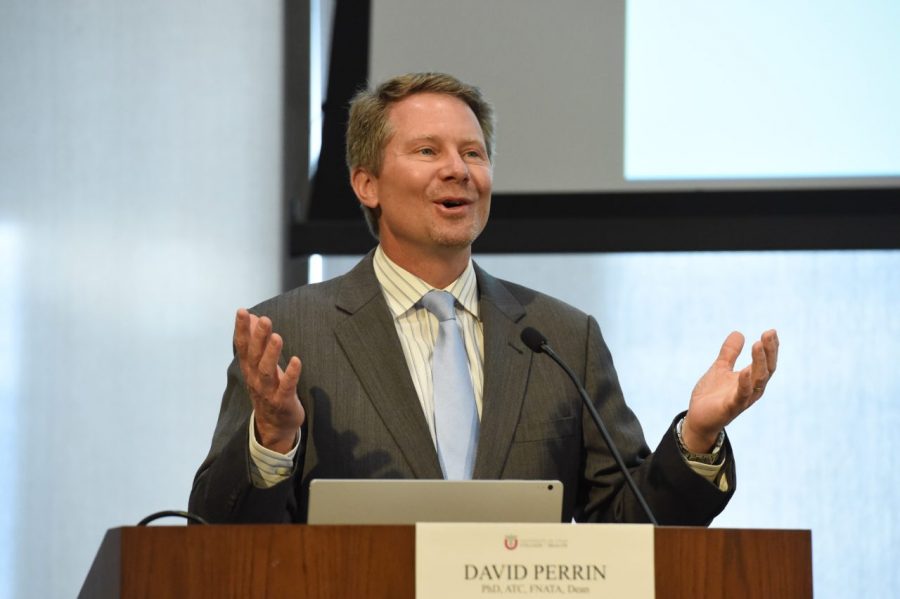With the 51st Super Bowl just days away, the University of Utah College of Health hosted a panel of scholars, specialists and physicians from around the country in a discussion that involved concussions and other head-related injuries in contact sports.
Around a hundred people attended the discussion on Friday at the S.J. Quinney School of Law. The audience consisted of students, researchers, physical therapists and former professional and intercollegiate athletes.
The discussion was spearheaded by a presentation from Kevin Guskiewicz, who is the Dean of the College of Arts and Sciences at the University of North at Carolina Chapel Hill. He talked about developments and advancements into understanding how big of a role concussions play in contact sports like football and hockey.
According to Guskiewicz, there is not a concussion epidemic in contact sports and there is no evidence that the number of concussions in professional, primary, or intercollegiate sports is increasing. Head injuries, however, are a major concern for athletes and physicians.
Guskiewicz believes concussion prevention should be a priority for sport organizations at every level.
“If we can keep our emphasis on how to prevent this and how to teach safe sports, we are going to be in a much better place in just a few years from now,” he said.
At UNC, Guskiewicz and others have experimented with a variety of technologies and methods to help spot concussions when they occur. Using helmet sensor technology to measure the impact of a hit, UNC researchers have reviewed footage of games to determine what changes in posture, composure, and weight distribution can help a player minimize impact.
Using this method, Guskiewicz said players have made behavioral changes that have lead to results. By instructing one player to not lower his head, for example, that player was able to avoid unnecessarily excessive impact, diminishing the likelihood of a concussion-causing injury.
While improvements are being made, safety technologies are not without their limitations, Guskiewicz said, “[Helmet sensors] cannot diagnose a concussion.”
He also warned that not all new technologies and developments are reliable, “You have to be careful because some of them haven’t been independently validated.”
Also on the panel was Walter “Kip” Smith, an independent medical spotter for the Big 10 Conference.
Smith said he uses video replay to track impact and determine where a concussion may have occurred. One problem, however, is that concussions rely heavily on self-diagnosis. Smith said he wants players to pay attention to their collisions, stressing the importance of catching a concussion early on.
“Evaluate earlier rather than later,” Smith said.
During the question and answer session, one man, who played both collegiate and professional football, questioned the legitimacy of advancements in helmet safety. Safer helmets, he said, leads to careless behavior on the part of players. Tell players their helmets are safe and they will start treating them like “weapons,” the former football player said.
Guskiewicz agreed that advancements in helmet safety should not justify reckless behavior by players. While helmets are good at preventing brain bleeding and skull fracture, they do little to prevent concussions, he said.
“When you put that helmet on, no matter how good or bad it is, the brain is still going to slosh around inside the skull,” Guskiewicz said. “There is no concussion-proof helmet.”
While advancements are being made in understanding brain injury in sports, Guskiewicz stressed that research is inconclusive and ongoing. Right now, most research is being funded by the Center for Disease Control and Prevention.
There is, however, an increase in research from institutions like the National Football League, National Collegiate Athletic Association and the NFL Players Association. Guskiewicz said he makes a conscious effort to make sure studies from these groups are credible and impartial.
“If you’re taking research funding from those groups you have to make sure there isn’t a conflict of interest,” Guskiewicz said. “We’ve all been very careful of that.”
No age group seems to be at a greater risk than any other, and Guskiewicz said there is no evidence that playing contact sports as an adolescent has a negative impact on brain development growing up.
Football is “about more than learning how to hit,” he said. Sports like football teach, according to Guskiewicz, personal and life lessons that help kids learn how to be responsible and how to work with others.
Prevention and safety measures are necessary, Guskiewicz said — but he does not believe parents should stop their kids from playing football.





















